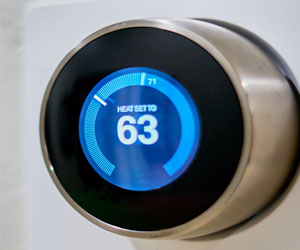


Cleaning Your Way To A Sustainable Future

Green cleaning techniques have become increasingly popular as people seek eco-friendly and healthier alternatives to conventional cleaning methods. These techniques focus on using natural, non-toxic, and environmentally responsible cleaning products and practices. In this article, we will explore the principles and benefits of green cleaning, as well as provide some effective techniques to help you achieve a cleaner, greener home.
The Principles Of Green Cleaning
Non-Toxic Products: Green cleaning relies on cleaning products that are free from harmful chemicals and synthetic fragrances. These products are safer for your health and the environment.
Reduced Environmental Impact: Green cleaning minimizes the use of harsh chemicals that can contaminate water systems and contribute to pollution. It also promotes the use of eco-friendly cleaning tools and practices.
Clean Indoor Air: Green cleaning products and methods focus on improving indoor air quality by avoiding the release of volatile organic compounds (VOCs) commonly found in traditional cleaning products.
Effective Green Cleaning Techniques
Natural Cleaning Solutions: Utilize natural ingredients like white vinegar, baking soda, lemon juice, and essential oils to create your cleaning solutions. For example, a mixture of vinegar and water can serve as an excellent all-purpose cleaner.
Reusable Cleaning Tools: Invest in high-quality reusable cleaning tools, such as microfiber cloths and mop heads. These tools effectively capture and remove dirt, dust, and allergens, reducing the need for disposable cleaning supplies.
Reduced Plastic Waste: Opt for cleaning products and containers that are recyclable or refillable to reduce plastic waste. Single-use plastic bottles contribute to environmental pollution, and green cleaning encourages responsible consumption.
Energy-Efficient Appliances: Choose energy-efficient cleaning tools and appliances. For instance, energy-efficient vacuum cleaners and steam cleaners use less energy while providing effective cleaning.
Homemade Cleaning Solutions: Create your green cleaning solutions by mixing ingredients like baking soda, lemon juice, and essential oils. Experiment with different combinations to suit your cleaning needs.
Consistent Cleaning Routine: Establish a regular cleaning routine to prevent dirt and grime from accumulating. Regular cleaning not only maintains a cleaner home but also reduces the need for heavy-duty cleaning products.
The Benefits Of Green Cleaning Techniques
Improved Indoor Air Quality: Green cleaning techniques significantly reduce the presence of harmful chemicals and VOCs in your home, resulting in cleaner indoor air that's better for your health.
Healthier Living Environment: The non-toxic nature of green cleaning products reduces the risk of skin irritations, allergies, and respiratory issues. This is especially beneficial for households with children or individuals with sensitivities.
Reduced Environmental Impact: Green cleaning minimizes water pollution, plastic waste, and the production of harmful chemicals. By choosing green cleaning techniques, you contribute to a healthier planet.
Cost Savings: Many natural cleaning solutions are cost-effective and can help you save money in the long run, as you won't need to purchase expensive commercial cleaning products.
Green cleaning techniques are a vital step toward creating a more sustainable and healthier home. By embracing these techniques, you not only reduce your ecological footprint but also create a cleaner living environment that is safe for your family. The principles of green cleaning are rooted in responsibility, health, and sustainability, making it an essential choice for a brighter, greener future.
A Smarter Way To Control Your Comfort
 How Intelligent Thermostats Work
How Intelligent Thermostats Work
Intelligent thermostats are a significant departure from traditional thermostats. They leverage advanced technology, including sensors, Wi-Fi connectivity, and machine learning algorithms, to provide precise and customizable control over your home's heating and cooling systems. These thermostats gather data about your preferences, daily routines, and the current conditions inside and outside your home. With this information, they can automatically adjust the temperature to create a comfortable and energy-efficient environment.
Benefits Of Intelligent Thermostats
Energy Efficiency: One of the primary benefits of intelligent thermostats is their ability to save energy and reduce utility costs. By learning your temperature preferences and adapting to your schedule, these devices can optimize heating and cooling, preventing unnecessary energy consumption.
Customized Comfort: Intelligent thermostats allow you to set personalized schedules and temperature preferences for different times of the day and week. You can ensure that your home is warm in the morning and cooler at night, all without manual adjustments.
Remote Control: Most intelligent thermostats are Wi-Fi enabled, giving you the power to control your home's temperature remotely through smartphone apps or web interfaces. This feature is especially useful when you're away from home and want to ensure it's comfortable upon your return.
Learning Capabilities: Over time, intelligent thermostats adapt to your lifestyle. They learn when you're typically at home and when you're not, making automatic adjustments to save energy without sacrificing your comfort.
Compatibility: These thermostats are often compatible with various heating and cooling systems, including traditional furnaces and air conditioners, heat pumps, and radiant floor systems.
Voice Control: Many intelligent thermostats are compatible with voice-activated virtual assistants like Amazon's Alexa or Google Assistant, allowing you to adjust the temperature with simple voice commands.
Simplifying Life In The Modern World
 Defining Convenience Solutions
Defining Convenience Solutions
Convenience solutions are innovations that aim to eliminate or reduce the hassles and inconveniences we encounter in our everyday lives. They encompass a broad spectrum of offerings, from mobile apps and smart devices to delivery services and automation technologies. The overarching goal is to enhance our overall quality of life by minimizing the effort required to accomplish various tasks.
Home Automation
One of the most prominent categories within convenience solutions is home automation. Smart devices and systems are designed to control and manage various aspects of daily living. This includes intelligent thermostats that optimize heating and cooling, smart locks that enhance security, and voice-activated virtual assistants that can answer questions and perform tasks with simple commands. Home automation makes daily life more comfortable and efficient.
Meal Delivery Services
Convenience solutions have revolutionized meal preparation. Meal delivery services, such as Blue Apron, HelloFresh, and DoorDash, provide ready-to-cook meal kits and restaurant food delivered right to your doorstep. These services save time, reduce the need for grocery shopping, and offer a variety of dining options without leaving the comfort of your home.
Mobile Banking And Payments
Convenience solutions extend to the financial realm as well. Mobile banking apps and contactless payment methods enable quick and secure transactions. From checking balances to making payments and transferring funds, these technologies make managing your finances more efficient and accessible.
Keeping Your Garden Beautiful And Healthy
 Preventative Measures:
Preventative Measures:
The first step in effective weed management is prevention. Here are some strategies to consider:
Mulching: Apply a layer of organic mulch to your garden beds. Mulch not only conserves soil moisture and regulates temperature but also suppresses weed growth by blocking out sunlight.
Landscape Fabric: Landscape fabric or weed barrier cloth can be placed under mulch to provide an extra layer of weed control. It allows water to pass through while inhibiting weed growth.
Plant Density: Plant your garden densely to create competition for sunlight and nutrients, leaving less room for weeds to take hold.
Regular Inspection: Routinely inspect your garden for early signs of weeds. It's much easier to deal with a few weeds when they're small than to tackle a full-blown infestation.
Manual Weed Removal:
When weeds do appear, one of the most effective ways to manage them is through manual removal. Here's how to do it:
Use The Right Tools: Invest in a good set of hand tools for weeding, including a hand trowel, weeder, and a sharp hoe.
Get To The Roots: When weeding, it's crucial to remove the entire plant, including the roots. Weeds left with their roots intact can quickly grow back.
Weed After Rain Or Irrigation: It's easier to remove weeds when the soil is moist. Weeding shortly after rain or watering can make the task less labor-intensive.
Proper Disposal: After weeding, make sure to dispose of the pulled weeds properly. Don't leave them in your garden, as some weeds can regrow from detached pieces.






The Art Of Seasonal Planting
 The Importance Of Seasonal Planting
The Importance Of Seasonal Planting
Seasonal planting is more than just a tradition; it is a science and an art that has been practiced for generations. It recognizes the fact that different plants thrive in different seasons due to variations in temperature, daylight, and weather conditions. By aligning your garden with these natural rhythms, you can optimize plant growth, health, and yield.
Key Benefits Of Seasonal Planting
Optimal Growth Conditions: Seasonal planting ensures that your crops receive the right balance of sunlight, temperature, and moisture at each stage of their growth. This leads to healthier and more productive plants.
Crop Diversity: Planting seasonally allows you to diversify your garden throughout the year. Different seasons support various plant families, from cool-season greens in spring to warm-season fruits in summer.
Pest And Disease Management: Seasonal changes can disrupt the life cycles of garden pests and pathogens. By rotating your crops seasonally, you reduce the risk of infestations.
Soil Health: Seasonal planting helps maintain soil fertility by preventing the depletion of specific nutrients.
Navigating A Changing World
 1. Climate Change
1. Climate Change
Climate change, primarily driven by the emission of greenhouse gases such as carbon dioxide and methane, is arguably the most urgent environmental challenge. It results in rising global temperatures, melting glaciers, sea-level rise, and an increase in the frequency and severity of extreme weather events. Climate change has far-reaching impacts on agriculture, water resources, biodiversity, and human societies, with vulnerable communities often bearing the brunt of its consequences.
2. Biodiversity Loss
The loss of biodiversity is a global crisis with ramifications for ecosystems and human well-being. Habitat destruction, pollution, overfishing, and invasive species all contribute to the decline of species and ecosystems. The loss of biodiversity threatens food security, disrupts ecosystems' ability to adapt to environmental changes, and compromises the availability of life-saving medicines derived from nature.
3. Air And Water Pollution
Air and water pollution continue to affect the quality of our environment and public health. Pollutants released from industrial activities, transportation, and agriculture contribute to air pollution, leading to respiratory diseases and other health issues. Water pollution, often caused by untreated sewage, agricultural runoff, and industrial discharges, contaminates water sources, harming aquatic ecosystems and endangering drinking water quality.
4. Deforestation
Deforestation, primarily driven by agricultural expansion, urbanization, and illegal logging, results in the loss of vital forests worldwide. Forests play a critical role in sequestering carbon, preserving biodiversity, and regulating local and global climates. The loss of forests contributes to carbon emissions, soil degradation, and the disruption of countless ecosystems.